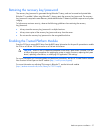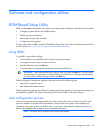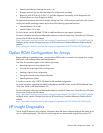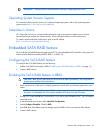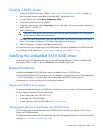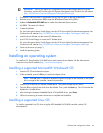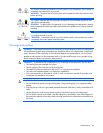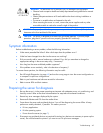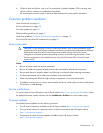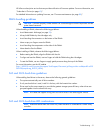
Software and configuration utilities 45
USB diskette and CD-ROM drives
For driver installation purposes, a USB diskette drive and USB CD-ROM drive are sufficient, unless otherwise
indicated in driver-specific documentation.
NOTE: Do not use a USB drive key in place of the diskette drive. The OS does not support driver
installation from a USB drive key.
NOTE: HP recommends the use of HP standard USB disk drives.
HP provides both standard USB 2.0 support and legacy USB 2.0 support. Standard support is provided by
the OS through the appropriate USB device drivers. Before the OS loads, HP provides support for USB
devices through legacy USB support, which is enabled by default in the system ROM.
Legacy USB support provides USB functionality in environments where USB support is not available normally.
Specifically, HP provides legacy USB functionality for the following:
• POST
• RBSU
• Diagnostics
• DOS
• Operating environments which do not provide native USB support
Creating a diskette image
Download the HP Embedded SATA RAID Controller driver and create a driver diskette using the instructions
on the HP website (http://h20000.www2.hp.com/bizsupport/TechSupport/Home.jsp). At the website,
click the link for "Support and Drivers."
Installing the Embedded SATA RAID driver with a USB diskette
drive
1. Boot the server, and then press F10 to enter the ROM-Based Setup Utility (RBSU).
2. Enable the Embedded SATA RAID option under the Advanced Options section.
3. Exit RBSU. The server will reboot.
4. When prompted, press F8 to enter the HP Embedded SATA RAID Setup.
5. Create an array, and then exit the HP Embedded SATA RAID Setup. The POST process will continue.
For information about creating arrays, see the HP Embedded SATA RAID Controller User Guide on the
HP website (http://www.hp.com/support/E_SATA_RAID_C_UG_en)
6. Install the operating system.
For information about installing an operating system, see the documentation that shipped with the server.
Installing the Embedded SATA RAID driver using Virtual Floppy



